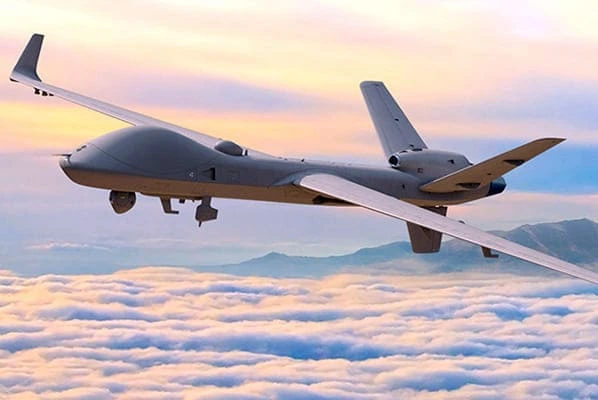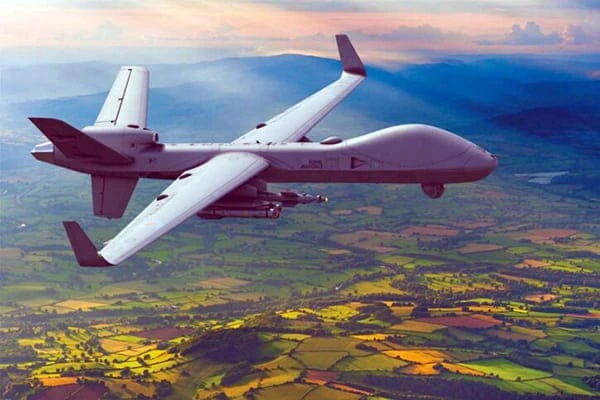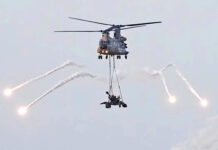India will soon buy the efficient 31 MQ-9B Predator Drones for the Indian Navy and Indian Air Force in order to advance India’s surveillance capability. This was confirmed by Chief of Naval Staff Adm R Hari Kumar on…. “The Predator MQ-9B drone is used for surveillance…This is a very useful asset…The government has given its approval to buy it now. There is a plan to buy 31 Predator Drones,” said the Navy Chief.
The MQ-9Bs, which will be assembled in India, will enhance the Intelligence, Surveillance, and Reconnaissance (ISR) capabilities of India’s armed forces across domains. As part of this plan, General Atomics will also establish a Comprehensive Global Maintenance, Repair and Overhaul (MRO) facility in India in support of India’s long-term goals to boost indigenous defence capabilities.
According to a senior MoD official, India is negotiating to increase the indigenous content under the deal. “The current indigenous content proposed is 8-9% while India is hoping it can be increased up to 15-20%. Discussions are underway. General Atomics is positive to it and the US government has to accept it,” the official said. General Atomics is in talks with several Indian companies for domestic manufacture of components as part of the deal, officials said. This could expand further to potentially include the manufacture of some electronics, sensor and avionics if the indigenous content goes up.
The MQ-9B has two variants — the SkyGuardian and the SeaGuardian, its maritime variant. The MQ-9B is designed to fly over the horizon via satellite for up to 40 hours, depending on configuration, in all types of weather and safely integrate into civil airspace, according to its manufacturer. For instance, the SeaGuardian configuration can include a 360-degree surface-search maritime radar, automatic identification system, sonobuoy monitoring system, and sonobuoy dispensers for persistent anti-surface and anti-submarine warfare missions.
According to General Atomics, the MQ-9B can provide roughly 80% of the capability of a large human-flown maritime patrol aircraft at about 20% of its cost per hour. That makes it much more economical for navies to, for example, send out SeaGuardians to clear big volumes of air or sea and then, if anything of interest is discovered, vector in a human-crewed aircraft to save it the time, cost, and wear that it otherwise might have expended, the company stated. This is the primary reason the Indian Navy is keen on these UAVs as it significantly reduces the wear and tear on manned aircraft, its fleet of 12 P-8I long range maritime patrol aircraft, as well as reduce crew fatigue in keeping an eye over the wide expanse of the Indian Ocean Region and beyond.
For the Army and Air Force, the MQ-9Bs can provide round-the-clock surveillance looking far beyond the borders, for instance on the movement of Chinese military build-up and troop movement along the Line of Actual Control (LAC) and deep inside. It also seamlessly integrates with other US-origin platforms that India operates, the P-8Is, AH-64 Apache attack helicopters, MH-60R multi-role helicopters among others expanding MQ-9B’s multi-domain mission set.
Deal Likely by March 2024
On June 15, the Defence Acquisition Council headed by Singh accorded the Acceptance of Necessity (AoN) or initial approval for the acquisition of 31 MQ-9B drones from the US under the foreign military sale (FMS) route.


India is looking at sealing a landmark deal to procure 31 MQ-9B Predator armed drones from the US under a government-to-government framework by March, according to a news agency report. The report said that government officials from the two countries will hold the final series of negotiations on the procurement after Washington responds to India’s Letter of Request (LoR) for the acquisition of drones from US defence major General Atomics (GA).
The procurement would cost around $3 billion as per estimates, though the price of the drones will be finalised during the negotiation process.
About the Drones
In 2020, the Indian Navy had taken on lease two MQ-9B Sea Guardian drones from General Atomics for a period of one year for surveillance in the Indian Ocean. The lease period has been extended subsequently.
The Sea Guardian drones can carry out a variety of roles, including maritime surveillance, anti-submarine warfare and over-the-horizon targeting and are being procured for the three services. While the Navy will get 15 Sea Guardian drones, the Indian Air Force and the Army will each get eight Sky Guardian drones.
Known for its high-altitude long-endurance, MQ-9B drones are capable of remaining airborne for over 35 hours and can carry four Hellfire missiles and around 450 kgs of bombs.
The Indian Navy plans to equip the Sea Guardians with sonobuoys, enhancing their ability to detect and track Chinese submarines in the Indian Ocean Region (IOR).
The drone can carry four SDS pods on its four wing pylons, allowing it to carry 40 ‘A’ size or 80 ‘G’ size sonobuoys, according to General Atomics. A sonobuoy is a small device used for underwater acoustic surveillance. It contains hydrophones that detect underwater sounds, especially those made by submarines. These devices are deployed from aircraft or ships and transmit real-time acoustic data, helping pin-point potential submarine threats. These systems, along with the P-8I long-range anti-submarine warfare aircraft, will enable the Navy to hunt Chinese and Pakistani submarines lurking deep in the IOR.
The Sea Guardian, with its 1,200 nautical mile range and significant on-station time, low maintenance, and low operating cost, can loiter over a designated area for a long time, deploying sonobuoys for locating submarines. After the detection of a submarine, the P-8I, with its high speed, can reach the designated area in a short period and drop torpedoes.
These drones also have the ability to patrol the entire IOR in one go, owing to their 30-hour endurance and 4,000 to 8,000-kilometre range.
The MQ-9 Predator drones saw action in Afghanistan, Iraq, Pakistan and Syria, where they were used for reconnaissance operations, close air support and for targeted killings. These drones were used for taking down high profile terrorists like Mullah Omar – the founder of the Taliban, and, Ayman Al-Zawahiri– the late emir of Al-Qaeda in Afghanistan.
The MQ-9B Predator is an upgraded and much more advanced version of the MQ-9 Predator. It is fitted with sophisticated surveillance facilities, bombs and armed with American made surface to ground – AGM-114 Hellfire missiles.
In the last few years, the India-US defence cooperation has been on an upswing. Prime Minister Narendra Modi and US President Joe Biden in their talks on the sidelines of the G20 summit in Delhi, vowed to “deepen and diversify” the bilateral major defence partnership while welcoming forward movement in India’s procurement of 31 drones and joint development of jet engines. The US designated India a “Major Defence Partner” in June 2016, paving the way for sharing of critical military equipment and technology.



















